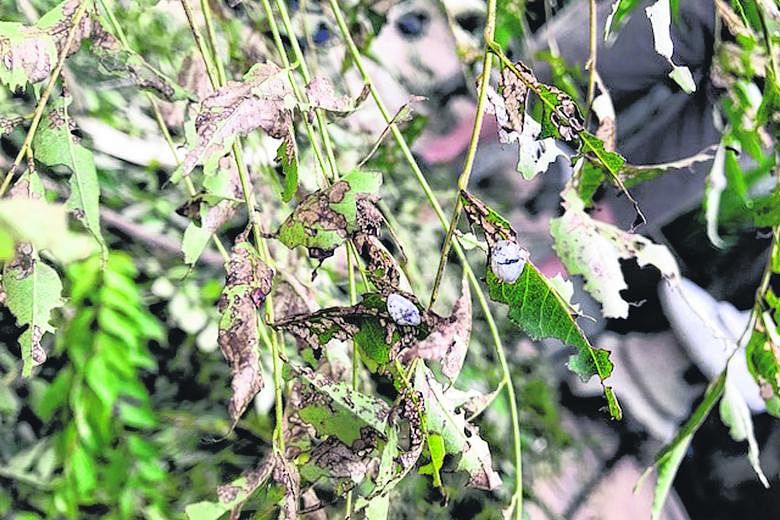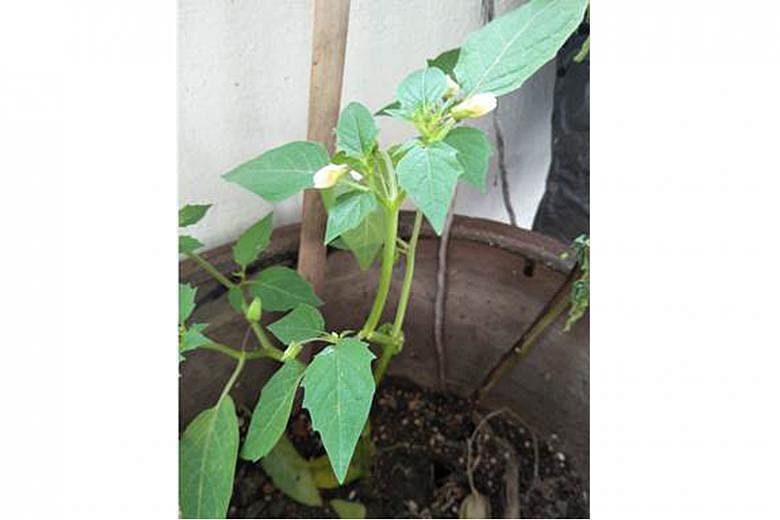Japanese bamboo, money plant thrive with several hours of filtered light
May I know the name of the plant (above)? How should I take care of it? Also, is this other plant the neon pothos (above right)? Should I care for it the same as other pothos?
Lim Tsz Kwan
The plant (photo 1) is a type of Japanese bamboo. It is botanically known as Dracaena surculosa and hence not a true bamboo.
There are two other more attractive cultivars, namely, Florida Beauty and Milky Way, which feature more vivid variegation and splashes of white on their leaves.
The plant (photo 2) is a type of money plant - it is known botanically as Epipremnum aureum and the cultivar name is Gold. It is characterised by its chartreuse foliage. Grow it under good light to get a more vivid leaf colour. Under shadier conditions, the leaves will take on a greener appearance.
Both plants - they are touted as "indoor plants" which is a misnomer - grow best if they are exposed to several hours of filtered sunlight a day, either on a window or balcony. You can supplement light using a desk lamp placed about 20cm above the plants. The lack of light will lead to sluggish growth and plants will be prone to pests and diseases.
Soil should be well-drained and kept moist at all times. A slow-release fertiliser will likely provide sufficient nutrients for the potted plants in an indoor setting.
White tortoise beetles attacking curry tree
I have a curry tree (Murraya koenigii) that has been recently infested with this insect. What is this pest and what is the best way to eradicate the infestation?
Jackie Tan
It seems that your curry tree (Bergera koenigii) has been attacked by adult white tortoise beetles. They appear as white, round bumps and the larvae and adults both feed on the leaves of this plant. The infestation seems severe, so it is best to prune affected parts.
For the most environment-friendly solution, pick off remaining pests and discard them. There are no organic pesticides that are locally available that are effective against the white tortoise beetle.
In the future, it is recommended that you check your plant regularly, especially the underside of leaves, so that you can promptly remove the pests when they appear.
Wild cape gooseberry is edible when ripe
I checked on the Internet and found a lot of plants that are similar to this one. What is the name of this plant and is it edible?
Liu Beng Guek
Did this plant appear on its own in the pot? If so, it could be the wild cape gooseberry or pygmy groundcherry, which is botanically known as Physalis minima. This plant self-sows readily, probably via bird droppings that carry the seeds.
The fruit of this plant take some time to ripen. Ripe fruit can be distinguished by the papery covering turning dry and light brown. The berry inside, when ripe, will take on a bright orange hue. This is an indication that it is ready and safe to be consumed.
Oyster plant seen as medicinal plant
We have been boiling the leaves of this plant for its cooling properties and drinking the decoction, without knowing whether it is edible. Is it safe to consume the plant?
Sim Bee Bee
The plant's botanical name is Tradescantia spathacea. Its common names include Moses-in-the-cradle and oyster plant.
Locally, the Chinese call it "Ang Teck Hiok" which literally translates to Red Bamboo Leaf.
It has been documented, in various resources, as toxic. Its sap from raw, fresh leaves has calcium oxalate crystals and can lead to irritation of the skin, mucous membranes and eyes. Hence, the raw leaves should not be eaten.
This substance is also found in many houseplants such as the dumbcane and money plant and even the common edible yam.
However, this plant is regarded locally as a medicinal plant, where the leaves are first boiled in water to yield a purple decoction that is then drunk. It is believed that the drink can reduce body heatiness.
The calcium oxalate crystals are destroyed during cooking and that probably renders the decoction safe for consumption.
Tiger orchid is a seasonal bloomer
After nine years, my tiger orchid bloomed in 2010 with five spikes. What fertiliser can I use to help it bloom faster?
Hassan Ali
This tiger orchid (Grammatophyllum speciosum) has likely attained its mature size so as to be able to produce five flowers spikes previously. You can use a water-soluble orchid fertiliser meant for flowering to encourage your plant to bloom.
This orchid species is known to be a seasonal bloomer. If you are lucky, it may produce flowers twice yearly.
It is important to ensure your plant is strong and healthy. As it is an epiphyte, it should be grown in an aerated media, and not in soil, and given sufficient sunlight to grow well.
Plants can grow under full sun, if regular watering occurs.
• Answers by Dr Wilson Wong, a certified practising horticulturist and founder of Green Culture Singapore (www.greenculturesg.com). He is also an NParks-certified park manager.
• Have a gardening query? E-mail it with clear, high-resolution pictures of at least 1MB, if any, and your full name to stlife@sph.com.sg






